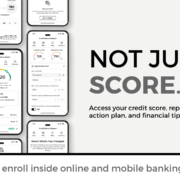It’s Time for Your Annual Financial Checkup
The holidays are over, the decorations are packed away, and a fresh start awaits! It’s time to take a good, hard look at your finances and see where you stand. Think of it as a financial spring cleaning – a time to declutter your spending habits, identify areas for improvement, and set yourself up for a prosperous year ahead.
Let’s begin with a thorough financial checkup. Start by reviewing your bank statements. Did you spot any unauthorized transactions, recurring charges you may have forgotten about (like that monthly subscription box you barely use), or any suspicious activity? Consider consolidating multiple accounts into one to simplify your financial life and potentially earn higher interest rates. Don’t hesitate to contact your bank immediately if you notice anything unusual.
Next, let’s scrutinize your credit card statements. Analyze your spending habits. Are you dining out too often? Indulging in too much online shopping? Now’s the time to identify those spending leaks and adjust. Pay off high-interest balances promptly to avoid accumulating unnecessary debt and the burden of hefty interest charges. Contact your credit card issuer to explore balance transfer options or negotiate a lower interest rate.
Now, let’s turn our attention to your investments. Look at how your investments are performing. Are they keeping pace with your goals? Consider rebalancing your portfolio to ensure it aligns with your risk tolerance and long-term financial objectives. Diversify your investments across different asset classes to mitigate risk. Don’t forget about tax-loss harvesting – if you’ve experienced any investment losses, you might be able to use those losses to offset capital gains from other investments. A financial advisor can help you navigate this and make sure your investment strategy is on track.
Don’t forget to review your retirement accounts. Are you contributing the maximum amount allowed to your 401(k)? If your employer offers an employer match, you’re essentially leaving free money on the table! Explore options like contributing to a Traditional IRA (tax-deductible contributions, but you’ll pay taxes on withdrawals) or a Roth IRA (contributions are made with after-tax dollars, but qualified withdrawals are tax-free). A financial advisor can help you determine the best option for your individual circumstances and tax situation.
Plan for the Future by Setting Goals and Creating a Budget
Now, let’s shift our focus to the future and set some exciting financial goals. What are you dreaming of achieving this year? Saving for a down payment on a home? Funding an epic travel adventure? Planning for your child’s education?
Set specific, achievable, and realistic goals. Instead of simply saying “save more money,” aim for something concrete like “Save $5,000 for a down payment on a house by the end of the year.”
Now, let’s create a budget that works for you. Experiment with different budgeting methods:
- The 50/30/20 Rule: Allocate 50% of your income to needs (rent, utilities, groceries), 30% to wants (entertainment, dining out), and 20% to savings and debt repayment.
- Zero-Based Budgeting: Assign a specific purpose to every dollar of your income. This method helps you become more mindful of your spending and avoid unnecessary expenses.
- Envelope Budgeting: Use physical envelopes to allocate cash for specific categories. This can help you stay on track with your budget and avoid overspending.
Making Your Money Work for You
Now it’s time to act! Prioritize paying off debt. Consider the debt avalanche method (tackle the highest interest debt first) or the debt snowball method (pay off the smallest debt first to gain momentum and build confidence). Explore debt consolidation options to simplify your debt management.
Maximize your retirement contributions. Contribute the maximum amount allowed to your 401(k) and take advantage of any employer match. Explore options like contributing to a Traditional IRA or Roth IRA.
Don’t forget about tax planning strategies. Explore tax-loss harvesting to offset capital gains. Consult with a tax advisor to identify deductions, credits, and other strategies to minimize your tax liability.
Additional Tips for a Successful Financial Year:
- Automate your finances: Set up automatic payments for bills and transfers to your savings account to streamline your financial life and ensure consistent savings.
- Review your insurance coverage: Ensure you have adequate coverage for your home, auto, health, and life insurance needs.
- Seek Professional Advice: Consider consulting with a financial advisor to create a personalized financial plan. A financial advisor can help you with budgeting, investing, retirement planning, and other financial matters.
- Stay Informed: Stay up to date on financial news and trends by reading financial publications, following financial experts on social media, and attending financial seminars.
- Practice Mindfulness: Mindfulness techniques can help you make more conscious and less impulsive financial decisions.
By taking these steps and implementing these strategies, you can set yourself up for a successful financial future. Remember, small steps can lead to big results.
The Key to Effective Budgeting
Taking control of your finances is crucial at every stage of life. Whether you’re saving for a down payment, planning for retirement, or simply striving for greater financial peace of mind, understanding your spending habits, and creating a budget are essential steps.
- Understanding Your Spending
Before you can effectively manage your money, you need to understand where it’s going. This involves a thorough analysis of your spending patterns.
- Track Every Dollar: Utilize your bank’s online and mobile banking tools. Analyze your transaction history carefully. Identify recurring expenses, impulse purchases, and any “money drains” – those sneaky expenses that consistently chip away at your budget.
- Categorize Your Spending: Divide your expenses into specific categories like housing, transportation, food, entertainment, healthcare, education, childcare, savings, and debt repayment. This granular breakdown will reveal spending patterns you might not have noticed.
- Identify Areas for Improvement: Analyze your spending patterns to identify areas where you can cut back. Can you reduce dining out expenses? Can you negotiate lower rates for your utilities? Can you explore more affordable entertainment options?
- The “Needs vs. Wants” Analysis: Before making any purchase, ask yourself:
- Do I need this? (Distinguish between essential needs and discretionary wants.)
- Can I afford this? (Consider the impact on your overall budget and financial goals.)
- Will this bring me long-term value? (Avoid impulsive purchases that offer little lasting benefit.)
- Building a Budget That Works for You
Creating a budget is a key step in taking control of your finances. A well-defined budget provides a framework for making conscious financial decisions and helps you stay on track towards your financial goals.
- Calculate Your Net Income: Determine your net income (take-home pay) after taxes and other deductions.
- Set Clear Financial Goals:
- Define your long-term goals: Retirement, homeownership, travel, education – what matters most to you?
- Set SMART goals:
- Specific: “Save $20,000 for a down payment on a home.”
- Measurable: “Contribute $500 per month to my retirement account.”
- Achievable: Set realistic and attainable goals.
- Relevant: Ensure your goals align with your values and aspirations.
- Time-bound: Set deadlines for your savings goals (e.g., “Save $20,000 within the next two years”).
- Create a Realistic Budget:
- Explore Budgeting Methodologies:
- The 50/30/20 Rule: A common guideline suggests allocating 50% of your income towards needs (housing, utilities, groceries, transportation), 30% towards wants (entertainment, dining out, hobbies, travel), and 20% towards savings and debt repayment. However, this is a guideline. Adjust it based on your individual needs and income.
- The Zero-Based Budgeting Method: Allocate every dollar of your income to a specific category, ensuring that all income is accounted for.
- Utilize Budgeting Tools:
- Budgeting Apps: Explore user-friendly budgeting apps like Mint, Personal Capital, or YNAB (You Need A Budget) to track spending, create budgets, and set financial goals.
- Spreadsheets: Utilize spreadsheets (like Excel or Google Sheets) to manually track your income and expenses, create custom budgets, and visualize your financial progress.
- Explore Budgeting Methodologies:
- Build an Emergency Fund
Building an Emergency Fund provides a safety net for unexpected expenses, such as medical bills, car repairs, or job loss.
- Aim for 3-6 Months of Living Expenses: Ideally, your emergency fund should cover 3-6 months of living expenses.
- Start Small and Gradually Increase: Begin with a small amount and gradually increase your contributions over time.
- Utilize High-Yield Savings Accounts: Consider a high-yield savings account to maximize your returns on your emergency fund.
- Treat Your Emergency Fund as Untouchable: Avoid dipping into your emergency fund for non-essential expenses.
- Maximizing Your Savings & Investments
Saving and investing are important for building long-term financial security.
- Open a High-Yield Savings Account: Maximize your savings by choosing a high-yield savings account with competitive interest rates.
- Explore Certificates of Deposit (CDs): Consider CDs for longer-term savings goals, as they typically offer higher interest rates than regular savings accounts.
- Contribute to Retirement Accounts
- Maximize 401(k) Contributions: Take full advantage of employer-sponsored 401(k) plans, including any employer match.
- Consider an IRA: Open and contribute to a Traditional or Roth IRA to supplement your retirement savings.
- Work with a Financial Advisor: Consult with a qualified financial advisor to develop a personalized investment strategy.
- Managing Debt Wisely
Managing debt effectively is essential for long-term financial well-being.
- Prioritize High-Interest Debt: Aggressively pay down high-interest debt, such as credit card debt.
- Explore Debt Consolidation Options: Consider consolidating high-interest debt into a lower-interest loan, such as a personal loan or balance transfer credit card.
- Maintain a Good Credit Score: Your credit score plays a vital role in your financial health. Monitor your credit report regularly and take steps to improve your credit score.
- Utilize Your Bank’s Online and Mobile Banking Tools:
Your bank can be a valuable resource in your financial journey. Take advantage of your bank’s online and mobile banking tools to help you stay on track.
- Online Bill Pay: Schedule and track bill payments online, saving time and reducing the risk of late fees.
- Mobile Check Deposit: Deposit checks quickly and securely using your smartphone.
- Budgeting Tools: Utilize built-in budgeting tools to track spending, set savings goals, and create spending limits.
- Financial Calculators: Explore tools like retirement calculators, loan calculators, and savings calculators to help you make informed financial decisions.
- Building a Strong Financial Foundation
Building a strong financial foundation is an ongoing process.
- Review and Adjust Regularly: Regularly review your budget and adjust as needed to reflect changes in your income, expenses, and financial goals.
- Stay Informed: Stay updated on financial news and trends. Read articles, attend financial seminars, and utilize online resources.
- Educate Yourself Continuously: Continuously learn about personal finance through books, articles, and online resources.
Building a strong financial foundation is an ongoing journey. By embracing these principles, you can budget effectively to gain control of your finances, achieve your financial goals, and build a secure future.
Holiday Saving Tips for A Stress-Free Holiday Shopping Season
The holidays are a time of joy, giving, and celebration. But let’s be honest—managing finances this season can be overwhelming. From buying gifts and hosting parties to traveling and preparing holiday meals, it’s easy for your budget to spiral out of control. But here’s the good news: with a little planning and the tools available from Bank of St. Croix, you can enjoy a festive, stress-free holiday season without breaking the bank.
Let’s explore practical tips for managing your finances while still embracing the magic of the holidays.
Setting a Realistic Holiday Budget
A holiday budget is your foundation for financial success during this busy season. Without it, expenses can quickly pile up, leaving you feeling stressed and unprepared.
Identify All Income Sources and Fixed Expenses
Start by knowing exactly how much money you have to work with. Include your regular paycheck, seasonal bonuses, freelance gigs, and even side hustles. Every dollar counts! Don’t forget your monthly bills like rent, utilities, and insurance. Subtract these essentials from your total income to see how much is left for holiday expenses.
Allocate Funds for Holiday Costs
Set a specific amount for gifts, food, travel, and decorations. Remember, staying within your budget doesn’t mean cutting out the fun—it just means being intentional.
Pro Tip: Use the mobile app to track your spending in real-time. This ensures you stick to your budget while keeping the season enjoyable.
Crafting a Holiday Spending Plan
A well-thought-out plan goes hand in hand with your budget. Let’s break it down step by step:
Create a Gift List with Spending Limits and Plan for Non-Gift Expenses
List everyone you plan to shop for and set a spending cap for each person. This ensures you avoid last-minute splurges. Holiday meals, travel, and decorations can add up. Budget for these extras to avoid surprises later.
Consider DIY Gifts and Stay Committed to Your Plan
Handmade presents like baked goods, photo albums, or crafts can be incredibly meaningful and budget friendly. Once you’ve set your limits, stick to them. Challenge yourself to find creative ways to give within your means.
Smart Shopping Strategies
Savvy shopping can save you time, money, and stress during the holidays. Here’s how:
Make a Detailed Shopping List and Shop for Deals
Impulse buying is one of the easiest ways to overspend.
- Write down exactly what you need to buy and focus only on those items.
- Take advantage of online comparison tools, flash sales, and exclusive discounts. Shopping from home can also help you avoid the temptation of in-store browsing.
- Check out thrift stores, resale platforms, or post-holiday sales. You’d be surprised at the quality finds and savings available.
Utilize Black Friday, Small Business Saturday, Cyber Monday and Pre-Holiday Sales
Plan your big-ticket purchases during major sale events. It’s one of the best ways to snag great deals.
Hosting Affordable Holiday Meals
Holiday feasts are a big part of the season, but they don’t have to break the bank. These tips can help you serve up festive meals without overspending.
Plan a Budget-Friendly Menu
Stick to seasonal ingredients like root vegetables or winter fruits—they’re often cheaper and just as delicious. Avoid splurging on expensive, out-of-season items.
Batch Cook and Shop in Bulk to Save Time and Money
Prepare dishes in large quantities and freeze portions for later. It reduces last-minute cooking stress and helps you stretch your budget. Buy ingredients in bulk to take advantage of lower prices. Look for sales at warehouse stores or your local grocery store.
Host a Potluck and Repurpose Leftovers
Invite guests to contribute a dish. Not only does it reduce your workload, but it also creates a shared experience everyone will enjoy. Get creative with leftovers by making soups, casseroles, or sandwiches. It’s an easy way to extend the life of your holiday feast.
Travel Tips to Save During the Holidays
Travel can be one of the biggest expenses of the season. Here’s how to keep costs down:
Book Early and Be Flexible with Dates
The sooner you lock in flights and hotel reservations, the better. Prices tend to climb as the holidays approach. Traveling midweek or during off-peak hours can significantly cut costs. Try adjusting your plans to save on flights or accommodations.
Pack Light and Consider Alternative Transportation
Avoid checked baggage fees by packing efficiently. A carry-on bag is often enough for short trips. For shorter distances, buses or trains are often more affordable and convenient than flying.
Maintaining Financial Wellness
Financial health is just as important as your holiday plans. Let’s explore ways to stay on top of your finances while enjoying the season.
Practice Self-Care and Set Limits
Don’t let holiday stress affect your well-being. Take breaks, stay active, and focus on the joy of the season. It’s okay to say no to extravagant events or gift exchanges if they strain your budget. Remember, the holidays are about connection, not competition.
Avoid Holiday Debt and Seek Financial Advice
Stick to cash or debit for purchases to avoid piling up credit card debt. If you do use a credit card, aim to pay off the balance in full each month. Ask yourself, “Do I really need this?” before making a purchase. Small moments of mindfulness can save you big in the long run.
The holidays should be a time for making memories, not stressing over finances. By creating a budget and shopping smartly, you can have a joyful, stress-free holiday season. Remember, it’s not about how much you spend—it’s about the love, laughter, and connections you share.
What is a High-Yield Checking Account?
What is a High-Yield Checking Account?
Similar to a standard interest-bearing checking account, a high yield checking account allows you to earn a higher annual percentage yield (APY) therefore, ensuring that you earn more interest on the money in your account. According to the Federal Deposit Insurance Corp. (FDIC), in November 2023 a standard checking account earned 0.07% APY on average, while a high-yield checking account can earn upwards of 3.00%.
The biggest difference between standard and high-yield checking accounts are the criteria needed to qualify. For example, you may need to meet a certain number of debit card transactions per month, enroll in e-statements, or maintain a certain balance. Once all the monthly criteria are met, you then receive the APY associated with your account.
How does my account earn interest?
A high-yield checking account earns interest each statement period. However, if you did not meet the criteria for the month, the percentage you receive may be different.
What makes Elevate Checking different from other high-yield accounts?
With most high-yield checking accounts, all of the requirements must be met before earning interest. However, with Elevate Checking there’s more than one way to qualify. Earn interest by making six debit card purchases per month. Boost your rate by meeting any of these additional monthly qualifications: use online or mobile banking, receive eStatements, have monthly direct deposits of at least $500, maintain minimum daily balance of $1,000 in a Bank of St. Croix personal savings or money market account.
Each of our monthly qualifications is worth a certain percentage in interest. Therefore, the more criteria you meet, the more interest you earn, with potential to earn 2.00% APY.
Contact your local banker to learn more about our Elevate Checking Account today.
Annual Percentage Yield (APY) is accurate as of 08/01/2024. The APY range calculation is based on an assumed account balance cap of $30,000. The APY decreases as your balance increases above $30,000. Must meet certain criteria to qualify. When the Elevate Checking eligibility requirement and additional options are met, the interest rate on your account and corresponding annual percentage yield (APY) will vary based on the current applicable rates and tiers. When the Elevate Checking eligibility requirement is not met, the account will not earn interest. To obtain 2.00% APY you must complete a minimum of six (6) posted and cleared debit card Point-of-Sale (POS) purchases, access online or mobile banking, enroll and receive eStatements, ACH Direct Deposit(s) of at least $500.00, maintain a minimum daily balance of $1,000.00 in a Bank of St. Croix personal savings or money market account. Eligibility requirements must be in place and activity requirements must post and clear the account each statement cycle to receive the interest rate and APY of applicable rate tier. Rates and APY for each tier may change at any time without notice after the account is opened. Fees or other conditions could reduce earnings on the account. Minimum of $25 to open an account. Monthly service fee of $5 if balance drops below $500 any day during the statement cycle. Paper statement fee of $5 if eStatements are not utilized. Program rates, terms, and conditions are subject to change without notice.
A GUIDE TO AFFORDING YOUR FIRST APARTMENT
Congratulations on your new milestone… moving into your first apartment! While this is sure to be an exciting next chapter, it can also be overwhelming trying to understand the financial cost of apartment living. As a first-time renter, recognizing the financial responsibilities associated with renting will allow you to make smart decisions and ensure you can live comfortably. Here are a few things to consider when planning for your first apartment.
UNDERSTANDING RENTAL COSTS
In your research, you may have noticed that rental costs vary from place to place. Here are five main categories to help you better understand what costs go into apartment living.
- Security Deposit: This is typically equivalent to one month’s rent and is required by most property managers. This cost is typically refunded to you once the rental agreement is terminated.
- Monthly Rent: (Your most expensive cost): The cost of rent varies from city to city and complex to complex. Therefore, do some research to find out what the average cost of rent is in your area to determine a monetary goal. A good rule of thumb is to keep the cost of rent around 30% of your monthly income. This will ensure you have enough left over for other living expenses.
- Fees: There are several types of fees to consider when looking to rent an apartment – application fees, pet fees, parking fees, utility fees, and early move-out fees are fees you will typically come across in your apartment hunt. If you have any questions, reference the lease agreement, or contact the property management office.
- Utilities: Electricity, water, gas, trash, and internet are all costs to consider when moving into your first apartment. The cost of some utilities will vary depending on monthly usage, but others will be a flat monthly rate. Before moving in, understand which utilities will be added onto your monthly bill and which ones you may be responsible for.
- Renter’s Insurance: Like most insurances, renter’s insurance is meant to protect against damage caused by unexpected events. Most landlords require proof of renter’s insurance as part of the lease agreement. Insurance can be paid monthly or annually depending on your provider. Contact local insurance agencies to find a policy that works best for you.
IDENTIFY YOUR ESSENTIAL EXPENSES
When identifying your essential expenses, be sure to distinguish between your wants and needs. If necessary, make a list of non-negotiable expenses that contribute to your safety and survival (needs). Then, you can make a list of non-essential purchases that add fun and enjoyment to your life (wants). Having this list available will allow you to make informed financial decisions that will save you from stressing about your finances.
Examples of essential expenses:
- Rent
- Utilities
- Insurance
- Groceries
- Gas or transportation
Additional expenses to consider:
- Home Décor and Furnishings
- Laundry
- Parking
- Pet Fees
- Amenities Fee
MORE TIPS FOR AFFORDING YOUR FIRST APARTMENT
Set Your Savings Goal: Based on your research you should be able to determine an average monthly cost for renting your first apartment. With this information, you can create a budget that works best for you.
Consider Having a Roommate: Having a roommate can help decrease costs by splitting rent payments in half and sharing other monthly expenses.
Negotiate Your Rental Agreement: Some areas of your rental agreement may be negotiable. Based on your needs, communicate your expectations to your landlord and negotiate a contract that is agreeable for both parties.
Prioritize Needs Over Wants: While indulging in your wants are enjoyable, it’s important to prioritize your needs so you don’t fall into an unmanageable financial situation.
Elder Financial Abuse: How You Can Help
According to the National Council on Aging, “estimates of elder financial abuse and fraud costs to older Americans range from $2.6 billion to $36.5 billion annually.”
If you suspect someone may be a victim of elder financial abuse, you should report it to protect the safety and health of the person you are concerned about. This financial abuse could involve theft, fraud, or various scams designed to take an elderly person’s money or property.
Whether the abuser is a family member, a caregiver, or a stranger, it’s important to remember that there could be a real threat to that senior’s checking and savings accounts. These accounts could be wiped out all at once or they can be drained little by little.
Some of the warning signs you should look out for when it comes to elder financial abuse include the following:
- Unpaid bills piling up.
- Concerns about how people are handling an elderly person’s finances.
- Threats of utilities being cut off. (Note: Scammers will often ask you to pay with a wire transfer or a gift card. If you’re unsure, hang up immediately and call your bank or utility company at their official phone number and explain what happened.)
To protect yourself or a loved one from potential financial abuse, here are a few things to remember:
- Do not give out personal information including account numbers, social security number, or debit or credit card numbers unless you are sure it is necessary.
- Keep important financial documents locked up or in a safe and secure location.
- For better protection when purchasing, pay with a debit or credit card.
Reporting elder financial abuse can vary by state. However, you should report suspected abuse to local law enforcement and the local Adult Protective Services agency. If you know where the suspected victim does their banking, you should report your concerns to them as well, so they are able to take the appropriate precautions.
When filing your report, be sure to include the name of the elderly person, his or her address, the name of the suspected abuser, and note what you believe to be happening. Add as much information and detail as possible to the report.
While reporting potential financial abuse can be overwhelming, remember that you are their voice. For more information about financial exploitation of the elderly and vulnerable adults, visit the National Adult Protective Services Association.
The Summer Before College: Helping Your Child Prepare for the Transition
As a parent, some of the greatest joys in life are getting to watch your child grow into the person they were meant to be and witnessing their accomplishments… like, graduating and going to college!
Sending your child to college is a significant milestone. While this new journey can be daunting, it’s important to remember that college is more than just four years of higher education. It’s a gateway to once-in-a-lifetime opportunities, personal growth, and multiple new skills.
You can help make the transition less stressful by preparing your child for academic, social, and emotional challenges they may face in the process. Here are some tips to help you and your child prepare for their new home away from home and to ensure they are set up for success.
Take A Campus Tour
If you haven’t already, be sure to take a walk around campus. Many colleges have summer orientation which is a great opportunity for your teen to familiarize themselves with the campus. These visits will be especially beneficial if they already have their class schedule, as walking around the campus to check out each building where classes will be held can help your new student feel more confident on their first day of school.
Find A Place to Live
Work with your teen to secure a place to live. Many colleges require incoming freshman to live on campus for their first year. However, if they do not have to, work with your child to help them secure a safe and affordable place to live either on or off campus. If your teen has a roommate, this is also a great opportunity for them to connect and get to know them better.
Educate them on Money Management
Talk to your teenager about finances and how to be responsible with money while they’re away. Now that your child will have more freedom, educating them on the importance of financial responsibility can help keep them out of unnecessary debt. The summer before college is a great time to start teaching them the basics of budgeting and saving money. If they don’t already have one, have them open a checking account and get a debit card so they have access to their money. For emergencies, consider having your child apply for a student credit card. These often have low credit limits and are great to have available in the event of an emergency.
Share Some Life Skills
Teaching your child life skills such as cooking, doing laundry, checking the oil in their car, etc. can help make their transition to college life less stressful. Work with your child to equip them with as many life skills as possible before they go off to college. This is also a great opportunity to bond more with your child before they step into a world of their own.
Plan a Closet Clean Out
The summer before attending college is the perfect time to encourage your child to do a closet clean out. Unfortunately, your child will not be able to take everything they own to college with them. However, by doing a closet clean out, they’ll get a better idea as to what they already have. This can make packing for college easier and more organized.
Communicate the Importance of Time Management
The time leading up to college is a great time to teach your child about effective time management. While you’ve been responsible for ensuring they get up on time and make all of their appointments, the months before college are a great time to take a step back and allow them the opportunity to manage those things on their own. This is a great opportunity for your child to have a small glimpse at what being on their own could be like.
Discuss Work and Social Needs
College is a great opportunity for your child to discover more about themselves and shape them into who they want to be. Talk to them about the various clubs, organizations, and other opportunities available on campus they may want to participate in to meet like-minded individuals. Share with them the importance of building a network and how this can benefit them in the future both personally and professionally. If the college your child is attending holds a fair for incoming freshman to discover the campus clubs and organizations, encourage them to attend. This is always a great way to meet new people and discover what they might be interested in, as well as, possibly providing unique experiences that may benefit them in their future.











